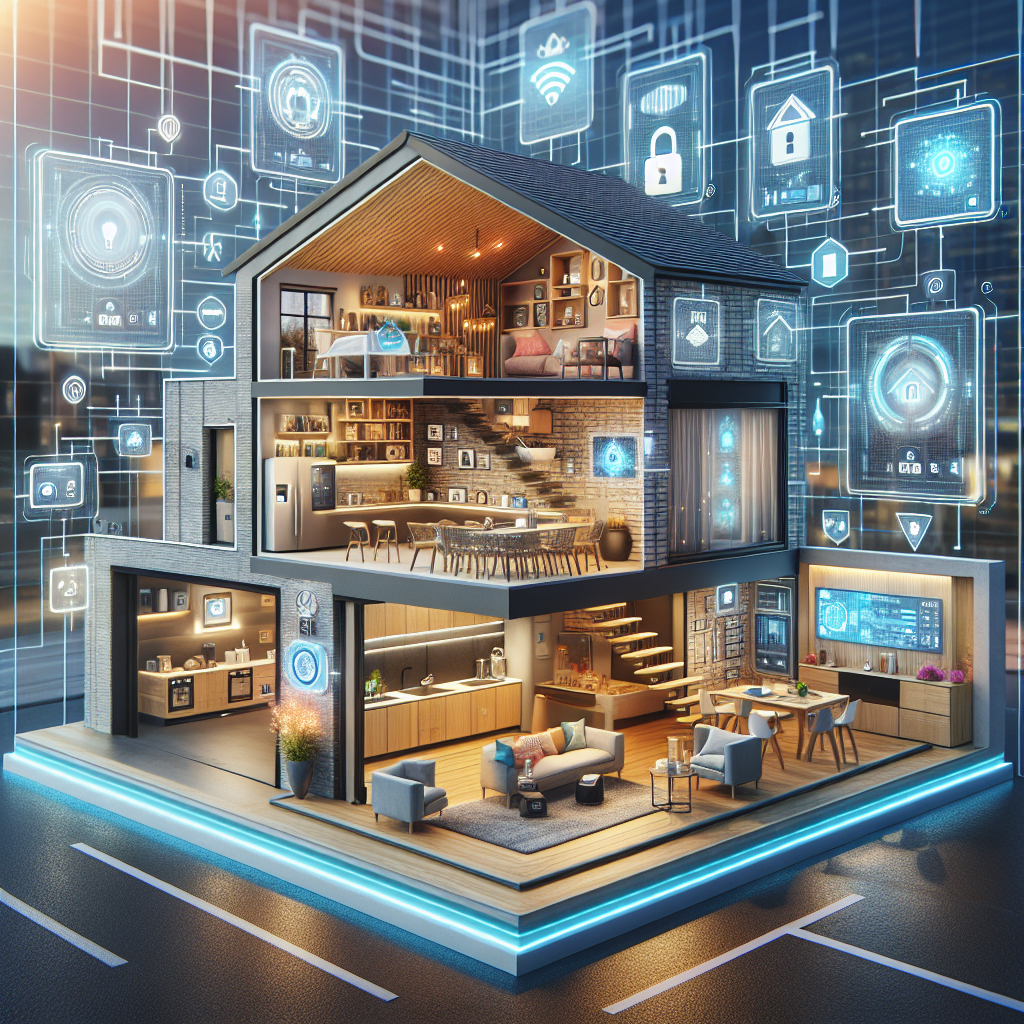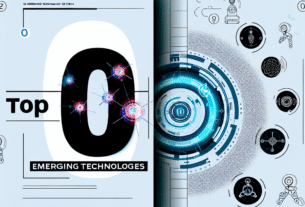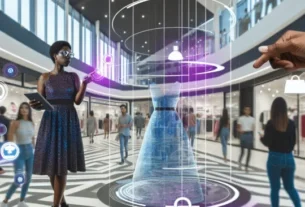# The Future of Home Automation: How IoT is Revolutionizing Smart Homes
## Introduction
Welcome to the amazing future of living spaces! Imagine your coffee maker knowing exactly when you wake up, and your lights having a more social life than most people. This isn’t a fairy tale; it’s the magic of IoT, or the “Internet of Things,” in action. But before you start thinking your fridge will give you life advice, let’s find out what IoT really is.
IoT means a network of connected devices that talk to each other and share data. This is not about giving your toaster an Instagram account but about making smarter and more efficient homes. Home automation has come a long way, from simple thermostats and chunky security systems to today’s smart and connected homes. This blog will look into how IoT is changing smart homes, turning a Jetsons fantasy into reality.
## The Evolution of Home Automation
Let’s remember the good old days when remote controls had wires, and robots doing chores were just in cartoons. Here’s a quick look at how things have changed.
1. **Pre-automation era**: Homes mostly had manual controls, like rotary phones or fans with switches.
2. **The rise of basic automation**: In the late 20th century, we saw advanced tech like programmable thermostats, simple alarms, and garage doors with keys.
3. **Baby steps toward smart living**: By the 2000s, we got the first smart thermostats, better security, and wireless technology getting ready to boom.
4. **IoT-enabled innovation**: And then IoT came along, and suddenly our devices could talk, predict, and adapt, creating the smart homes we enjoy today.
Those old gadgets changed into a cool system where devices chat with each other, making homes not just functional but futuristic.
## The Role of IoT in Smart Homes
IoT is the secret ingredient for our high-tech living spaces. But what’s in this secret sauce? It’s a mix of chips, sensors, and connectivity.
1. **Interconnectivity**: Remember the game of telephone? IoT is like that, but instead of friends, it’s your fridge, lights, and thermostat chatting away.
2. **Data-driven intelligence**: These devices don’t just talk; they collect a lot of data, using AI to learn your preferences and optimize them.
3. **Remote control**: With a smartphone, homeowners can control their entire house from anywhere. Imagine telling that to an old rotary phone!
With easy communication, IoT creates a smart home system that’s convenient, efficient, and exciting.
## Current Trends in Smart Home IoT
From being bossed around by our phones to letting a speaker suggest what to watch, smart homes are changing fast.
1. **Voice-controlled devices and virtual assistants**: Alexa, Google Assistant, and Siri are here to help, like having a digital butler without the sass.
2. **Smart security systems**: Cameras, locks, and motion sensors aren’t just for spies; they keep your home safe, day and night.
3. **Energy management solutions**: Meet smart thermostats and energy-saving lights, keeping you comfy and saving money too.
These trends are just a peek at what smart homes can do with IoT.
## The Impact of IoT on Everyday Living
IoT has quietly sneaked into our lives, helping us make a more connected and efficient world. It’s like a friendly home visitor but without the chaos!
1. **Enhanced convenience and comfort**: Who wouldn’t love coming home to a warm house with perfect lighting after work?
2. **Increased energy efficiency**: IoT can greatly reduce energy waste, making homes greener without leaving you in the dark.
3. **Improved security and safety**: With real-time alerts and smart surveillance, your home is as secure as a fortress but much more welcoming.
These perks are changing how we live, making life more comfy, safe, and eco-friendly.
## Challenges in Implementing IoT in Smart Homes
Of course, every rose has its thorns, and with IoT, there are a few bumps on the road.
1. **Privacy and data security concerns**: No one wants their fridge spilling secrets, so strong security measures are crucial.
2. **Device compatibility**: Like cats and water, some devices just don’t get along, which can make setup tricky.
3. **High initial costs**: While smart tech can be expensive initially, the long-term savings can even out the costs.
Solving these problems might take innovation and a bit of tech diplomacy to get the gadgets to play nice.
## Technological Innovations on the Horizon
So, what’s next for smart homes? Expect cool things like gadgets that bring you your slippers without tripping!
1. **AI-powered systems**: Think of advanced AI as your genius house manager who’s always on the job, looking for ways to improve.
2. **Advancements in connectivity**: With 5G and WiFi 6, home devices will communicate even faster, like a squirrel on too much coffee.
3. **New IoT-enabled gadgets**: Imagine fridges that plan your meals and windows that clean themselves. The future is almost here!
IoT developments are paving the way for more exciting and efficient smart living possibilities.
## The Future of Smart Homes with IoT
The next ten years are set to be as exciting as a sci-fi movie, with IoT tech changing not just homes but whole cities.
1. **Urban living and smart cities**: Picture smart trash cans, energy-saving buildings, and no-traffic commutes, all thanks to IoT.
2. **Societal impacts**: As IoT becomes common, it may change societal norms and economic practices, creating new jobs and markets.
With IoT, the future is full of possibilities, from homes to cities.
## Conclusion
As we stand on the edge of this tech revolution, the potential for IoT in smart homes is huge and still growing. With more convenience and security to eco-friendly impacts, IoT is building a foundation for a connected world. So, dear reader, embrace the change, stay informed, and maybe turn your home into the smart place of the future.
## Additional Resources
Want to know more? Check out these resources:
– [Smart Home Guides](https://smarthomehq.com)
– [IoT for Beginners](https://iot101.com)
– [Top Smart Devices to Buy](https://techgeekshop.com)
## FAQs
Let’s answer some common questions about IoT:
**Q: Are smart homes really that complicated to set up?**
A: Setting up can be pretty simple with the right guides and tools.
**Q: How secure are smart home devices?**
A: Security is always improving, but picking reputable products and having strong network security is key.
**Q: Will IoT devices work with my existing technology?**
A: Compatibility varies, so a bit of research and willingness to adapt might be needed.
And there you have it—the exciting world of IoT in smart homes! Let your devices chat and interact, while you enjoy all the amazing benefits of this bright, connected future.




